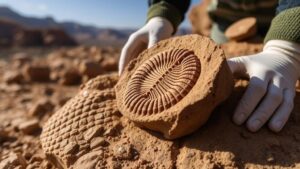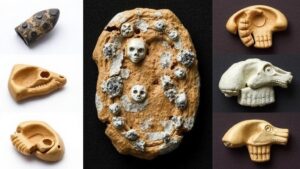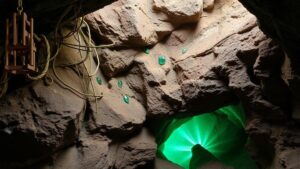Underwater Fossil Beds: Discovering Ancient Marine Life in Submerged Rock Layers
Underwater Fossil Beds: Discovering Ancient Marine Life in Submerged Rock Layers
Exploring underwater fossil beds offers a fascinating glimpse into ancient marine ecosystems, revealing the rich history of life that once thrived in the depths of our oceans. For rockhounds and mineral collectors, these submerged rock layers present both a challenging adventure and an opportunity to uncover significant paleontological treasures. This article delves into the formation, significance, and practical exploration tips related to underwater fossil beds.
The Formation of Underwater Fossil Beds
Underwater fossil beds typically form in sedimentary environments where marine organisms fall to the ocean floor and become buried by layers of sediment over time. Factors such as sedimentation rates, water temperature, and depth greatly influence the preservation of these fossils.
Research indicates that approximately 90% of all fossils are found in sedimentary rocks, which form from particles deposited over millions of years. For example, the famous fossil beds in the Green River Formation (Wyoming, Utah, and Colorado) are renowned for their well-preserved aquatic life, with some layers dating back to the Eocene epoch, about 50 million years ago.
Significance of Underwater Fossil Beds
Underwater fossil beds provide significant insights into ancient marine biodiversity, climate changes, and geological processes. They allow scientists to reconstruct past environments and understand how life adapted to changing conditions.
Consider the Chalk Formation, which is composed of calcite from marine organisms such as coccolithophores. e deposits are approximately 70 million years old and indicate a once-warm ocean that supported diverse life forms. Analyzing these formations can reveal information about historical oceanic chemical changes, which is crucial for predicting future marine environments in response to climate change.
Types of Fossils Found in Underwater Deposits
Several types of fossils can be found in underwater fossil beds, each providing unique insights into ancient marine life:
- Invertebrate Fossils: Such as mollusks and corals, often dominate marine fossil beds and are important for understanding the evolution of life.
- Vertebrate Fossils: Including fish and aquatic reptiles like ichthyosaurs, which can inform on the diversity of predatory strategies in ancient waters.
- Plant Fossils: Such as seagrasses or algae, which are crucial for identifying the past climate and sea level changes.
Exploring Underwater Fossil Beds
For rockhounds and mineral collectors, discovering underwater fossil beds requires careful planning and adherence to local regulations regarding fossil collecting. Here are some practical tips for effective exploration:
- Research Locations: Start with reliable resources to locate known fossil beds, such as geological maps or university publications detailing marine sedimentary formations.
- Use Scuba Diving Equipment: Ensure you are well-versed in scuba diving basics, as the majority of fossil beds are submerged beyond snorkeling depths.
- Join Organized Expeditions: Consider joining fossil hunting trips led by experienced paleontologists or clubs. This provides both safety and educational opportunities.
- Respect Fossil Regulations: Always comply with local regulations regarding fossil collection to protect these significant paleontological resources.
The Role of Technology in Fossil Discovery
Modern technology plays an integral role in the discovery and study of underwater fossil beds. Techniques such as sonar mapping and submersible robots are increasingly used to explore depths that were once unreachable. For example, the use of remote-operated vehicles (ROVs) has unveiled previously unknown fossil beds in the deep sea, allowing scientists to document and analyze these ecosystems without human disturbance.
Conclusion: The Future of Underwater Fossil Exploration
The exploration of underwater fossil beds continues to evolve, offering rockhounds and mineral collectors the chance to engage with ancient marine life in ways previously unimagined. As technology advances, the potential for discovering new species and understanding past ecosystems grows, making this an exciting frontier for both scientists and hobbyists alike.
By leveraging scientific approaches and maintaining an awareness of regulations, collectors can contribute to the field of paleontology while enjoying the thrill of discovery. Whether you’re diving in search of fossils or simply admiring their beauty in a collection, the underwater fossil beds remain a treasure trove of history waiting to be uncovered.



